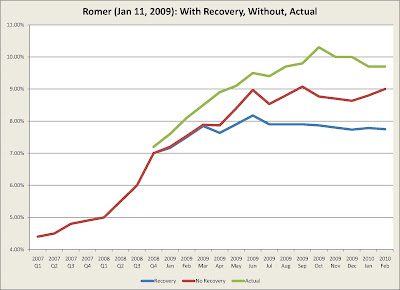Prof
Ablin, the professor who discovered the
PSA antigen which is used in testing for prostate cancer,
PCa, wrote a scathing editorial in the
NY Times this week decrying the test and its implications.
He starts by stating:
The test’s popularity has led to a hugely expensive public health disaster. It’s an issue I am painfully familiar with — I discovered P.S.A. in 1970. As Congress searches for ways to cut costs in our health care system, a significant savings could come from changing the way the antigen is used to screen for prostate cancer.
Americans spend an enormous amount testing for prostate cancer. The annual bill for P.S.A. screening is at least $3 billion, with much of it paid for by Medicare and the Veterans Administration.
I will have to strongly disagree with the good Professor. His test alone has some problems which is well recognized. Yet his test alone as a single measurement upon which to act dramatically was never intended to be used that way. Thus I believe that the whole basis for his argument lack any merit. I will make my argument here again, probably for the fifth time in this blog. It is a pity that so few professionals have so narrow a view.
Facts: PSA by itself as a one time test with a threshold of 4.0 as applied to all men does not significantly reduce mortality. This is a true fact. The Professor states:
The medical community is slowly turning against P.S.A. screening. Last year, The New England Journal of Medicine published results from the two largest studies of the screening procedure, one in Europe and one in the United States. The results from the American study show that over a period of 7 to 10 years, screening did not reduce the death rate in men 55 and over.
The European study showed a small decline in death rates, but also found that 48 men would need to be treated to save one life. That’s 47 men who, in all likelihood, can no longer function sexually or stay out of the bathroom for long.
As we had demonstrated almost a year ago, these studies used the 4.0 level as the benchmark and the European study had long periods between testing and the US study did two year testing and again applied 4.0 for all.
None of the studies recognized the newer research that said that 2.0 was the threshold for those under 60 and that velocity was a major component. Velocity is the change in PSA per year, and it is recognized that if the velocity exceeds 0.75 per year for men over 65 and with a stable PSA over 4.0 then the sensitivity and specificity rises appreciably. Second for men under 60 or with a baseline long term PSA under 2.0, if the velocity exceeds 0.25 the sensitivity and specificity also is quite high.
Also we know that free PSA and % Free PSA are further indicators of PCa, since the PCa cells bind the free PSA whereas the normal acinar cells do not.
Finally, family history is critical. It falls into three categories; no PCa, PCa of an indolent form, and PCa of a virulent form.
Thus if one has no PCa in ones family then most likely you have a lesser chance of having a virulent PCa. If your family history is of indolent forms then there is a good chance you too with have that form. If your family history is of a virulent form then you too may most likely have that form. What is a virulent form, well my father had that form. PSA went from 4 to 40 in two years and 40 to death in two years! Why did that happen, well we do not yet fully know the dynamics of the cancer pathways, we do know that PTEN was knocked out at some point and off it went.
This using a Bayes methodology, we really want to measure the following probability:
P[PCa| PSA, PSA Velocity, Percent Free, Percent Free Velocity, Family History]
Then given the a priori data we can determine an a posteriori probability and act accordingly.
The good Professor seemed to neglect all of these facts! One may as why he did so, political, professional, personal reasons, one can only wonder.
The Professor continues his, in my opinion, rant:
So why is it still used? Because drug companies continue peddling the tests and advocacy groups push “prostate cancer awareness” by encouraging men to get screened. Shamefully, the American Urological Association still recommends screening, while the National Cancer Institute is vague on the issue, stating that the evidence is unclear.
The federal panel empowered to evaluate cancer screening tests, the Preventive Services Task Force, recently recommended against P.S.A. screening for men aged 75 or older. But the group has still not made a recommendation either way for younger men.
Prostate-specific antigen testing does have a place. After treatment for prostate cancer, for instance, a rapidly rising score indicates a return of the disease. And men with a family history of prostate cancer should probably get tested regularly. If their score starts skyrocketing, it could mean cancer.
The test, when combined with other variables has been shown to have merit. Yet one of the factors is the patients history, the long term PSA data, not a single PSA measurement. One of the problems with a single PSA measurement is that there is a +/- 50% variation in PSA measurements. The PSA may vary from say 1.5 to 1.8 to 2.1, to 2.1 in the same person but using differing assays! That in itself would set off alarms. Yet if there were a 20 year history then one could better determine the velocity and watch for results and not jump to surgery.
More Facts: Prostate Biopsies, the sextant or 6 core forms, have been notoriously poor in detecting cancer. In addition the biopsy cannot as current performed determine indolent versus virulent forms, that is a genetic marker issue. One could do an assay on the cells for PTEN marker presence but that is still an experimental procedure. One could use the PCA3 test which determines Gleason 7 or greater with reasonable specificity and sensitivity but that is only a recent development and by the time one gets to Gleason 7 one may have a PCa which will have positive margins after prostatectomy.
One would like to get PCa at Gleason 5 or 6 with negative margins. This often means more cores. Thus for say a 40 cc prostate one needs 12 to 14 cores, and yet one may still have a 20% or greater chance of missing a cancer. In a larger prostate, say 60 cc one may need 20 cores and yet still have an almost 20% chance of detecting a PCa on the next biopsy say 6 months later.
The problem is that we do not have the genetic tools to detect PCa, and in fact almost all Cancers, at the earliest a stage. The problem with PCa is that we do not know the indolent from the virulent from even at biopsy!
Is the answer as the Professor argues just abandon the testing! I think not. Death from PCa is not a pretty picture, it is akin to breast cancer. Mets to bones, collapse of the spine, disseminated intravascular coagulation, and the like is not a pretty picture, even if the good Professor would like to shuck these off.
You see, the reason why I am so concerned is that I have just gone through the process, I used my Bayesian analysis, and yes we found something. Using the Bayes approach I was 100% sensitive and 100% specific. So from my close perspective, I used the educated consumer model and it worked. I thank the Professor for his test yet I find his wanting on its implications. It is a shame that he has joined the chorus of those who want Government to control our health, and our death!












